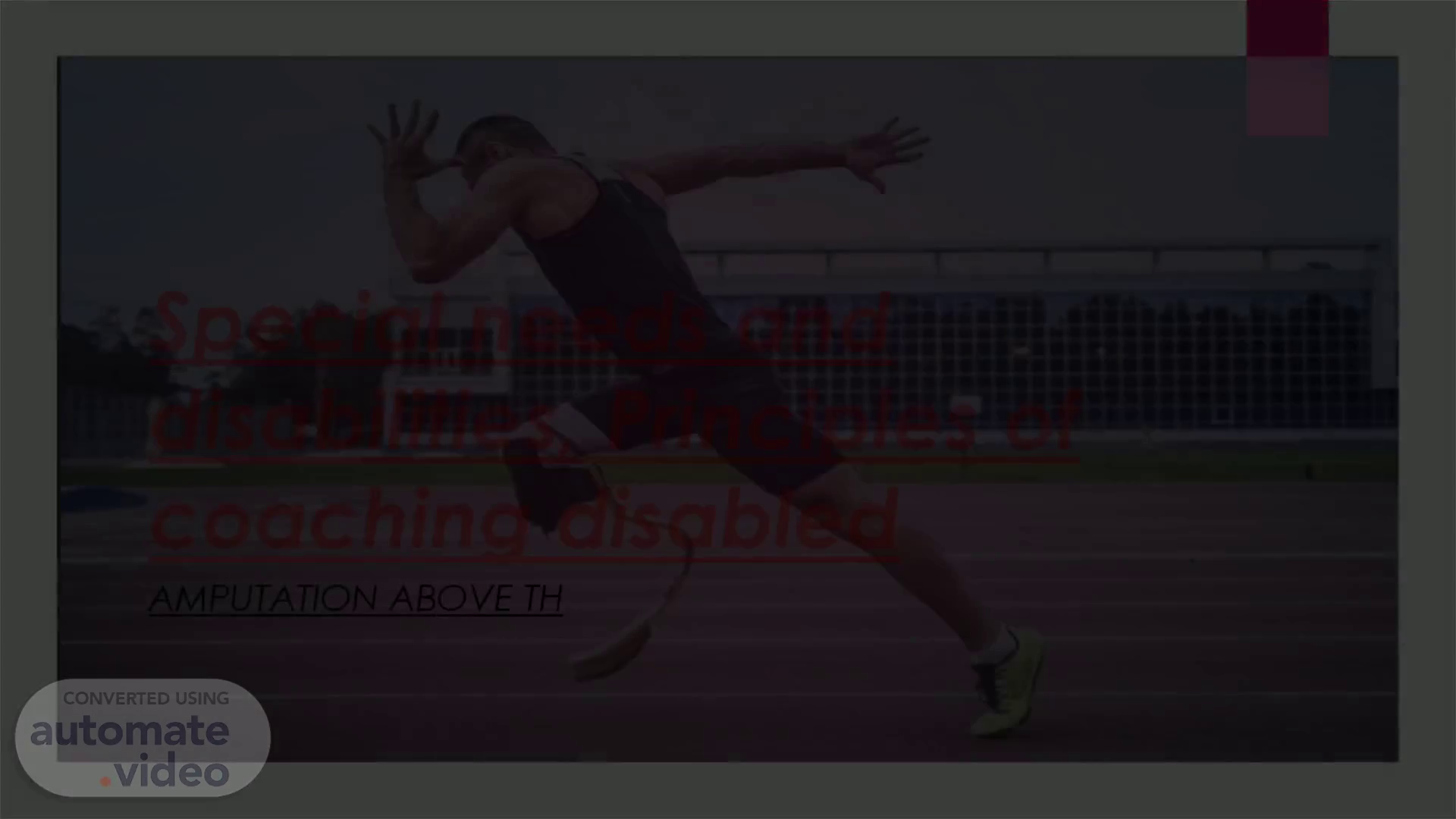
Page 1 (0s)
Special needs and disabilities , Principles of coaching disabled.
Page 2 (11s)
Amputation above the knee. Above-knee amputation , or transfemoral amputation is a surgical procedure performed to remove the lower limb above the knee joint when that limb has been severely damaged or diseased. Most AKAs are performed due to peripheral vascular disease, or severe disease of the circulation in the lower limb. Poor circulation limits healing and immune responses to injury. Foot or leg ulcers may develop and not heal. They may become infected, and the infection may spread to the bone and become severe enough to be life threatening. Amputation is performed to remove the diseased tissue and prevent further spread of infection. Above-knee amputations are performed when the blood flow is inadequate in the lower leg or infection is so severe it prohibits a lower-level surgery..
Page 3 (48s)
c,qnc. The cause of this kind of disability. . The most common causes leading to amputation are diabetes mellitus, peripheral vascular disease, neuropathy, and trauma. The level of amputation will depend on the viability of the soft tissues used to obtain bone coverage..
Page 4 (1m 6s)
Considerations to be taken when training an amputee person.
Page 5 (2m 17s)
The challenges when training this kind of disable person.
Page 6 (2m 47s)
Adaptations and modification in his/her exercise.
Page 7 (3m 18s)
Communication challenges and adaptations. Using clear and concise instructions when providing verbal cues during exercises. Break down complex movements into smaller steps and provide simple, actionable cues. Avoid jargon or technical terms that the individual may not be familiar with. Incorporate visual demonstrations to complement your verbal instructions. Demonstrating exercises or movements can help individuals better understand and replicate the desired actions. Use visual aids such as pictures, videos, or mirrors to enhance visual feedback. Practicing active listening and demonstrate patience during your interactions. Encourage the individual to ask questions, express concerns, or seek clarification. Take the time to understand their unique challenges, preferences, and goals. For individuals with limb loss, providing tactile and hands-on guidance can be beneficial. Use touch to provide feedback on proper form, body positioning, or alignment during exercises. However, always obtain the individual’s consent and respect their personal boundaries..
Page 8 (4m 2s)
The conclusion. In conclusion, training individuals with limb loss, including those with amputations, requires careful consideration and adaptations to meet their unique needs. By addressing the physical, psychological, and communication challenges they may face, personal trainers can create a supportive and inclusive training environment..